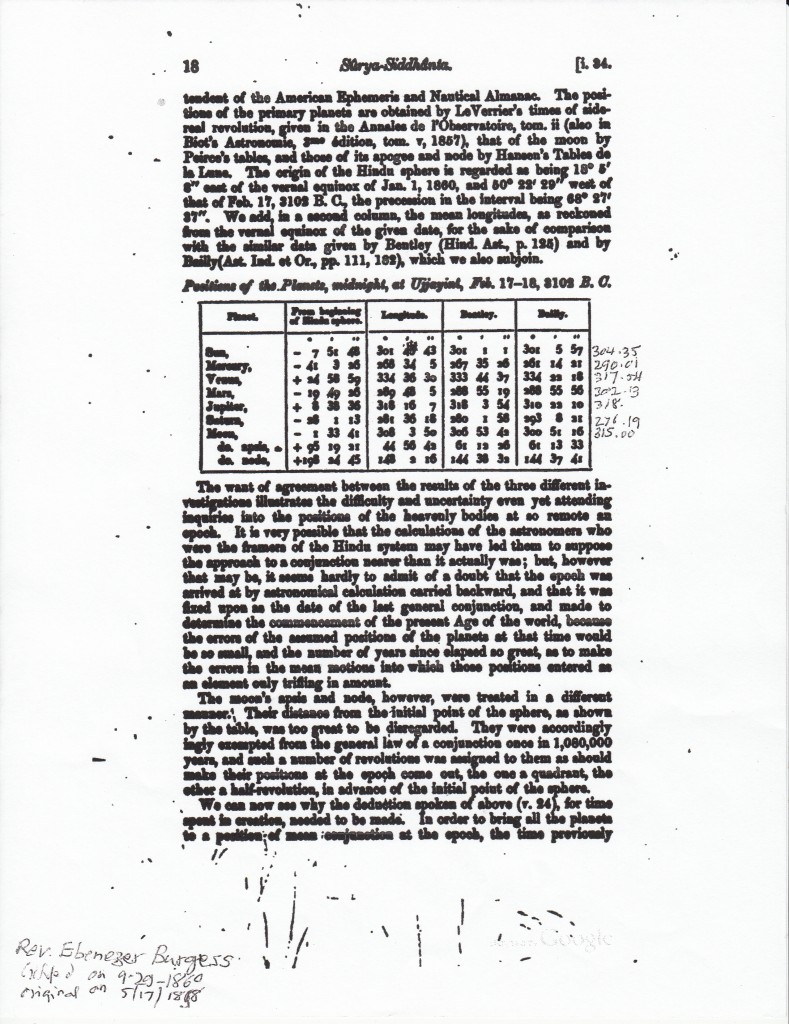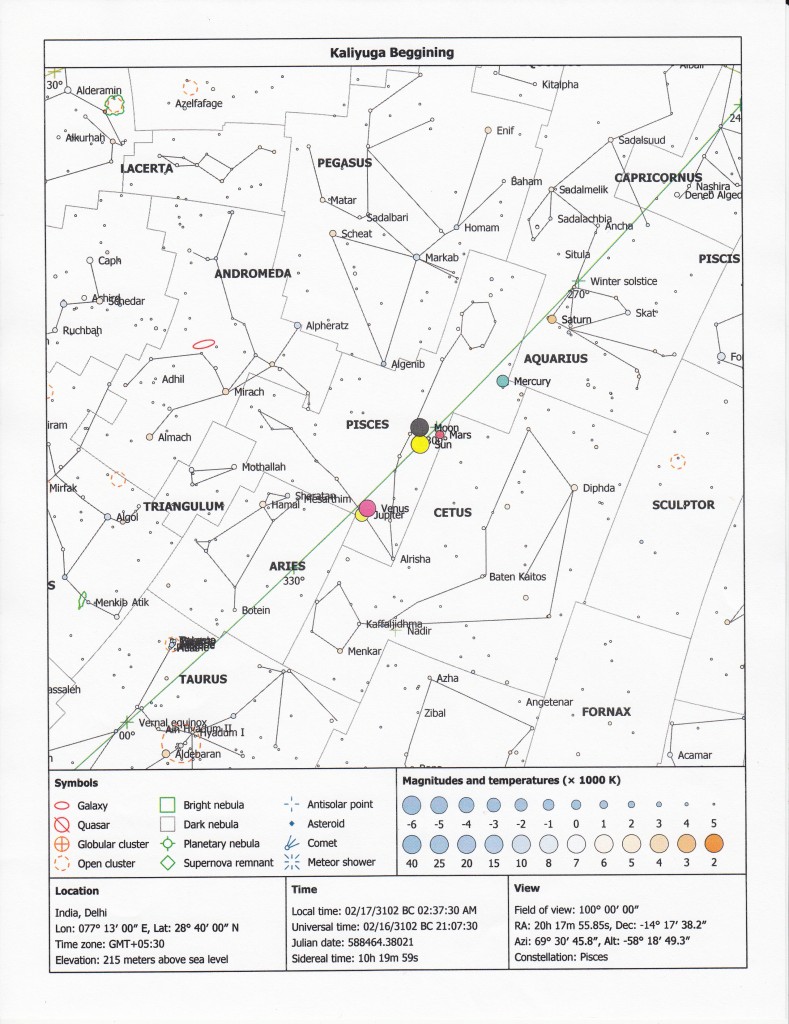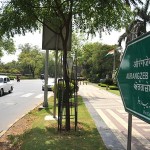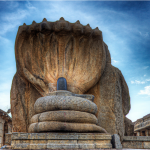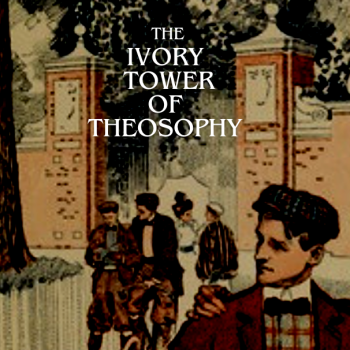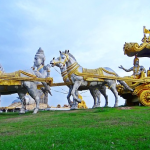By Ramesh Panchwagh, Woodstock MD
The Surya Sidhant is the most ancient literature after the Vedas, in India and the World. It is written about the Astronomical Science and mathematics. It is based on the calculations of the Kalpa and Manvantar Math. Its year of writing is given in the book itself, which is 19,729,492nd year, at the end of the Satya or Krita Yuga. For those who are unfamiliar of this era, Krita Yuga (17,28,000 years) was the first era, followed by the Treta Yuga (12,96,000 years), which is followed by the Dwapar Yuga (864,000 years), and lastly the Kali Yuga (432,000 years), which is the present Era. The total of all four eras is 43,032,000 years according to the Hindu scriptures. Many believe this number of years as imaginary and based on mythology. This article is written to investigate these claims.
Ramayana was written at the end of the Treta Yuga and the Mahabharata was written at the end of the Dwapar Yuga. Kali Yuga started in 3102 BC and presently 5112 years have passed in it. Surya Sidhant provides the planetary positions and dates of the beginning of each of these eras. However, because of the very ancient dates, the only date of the Kaliyuga beginning could be verified with calculations. The book provides the date of the Kaliyuga beginning as 17th February, 3102 BC after midnight and states that it would be an Amavasya or new moon and that 7 planets would line up in conjunction in one sign. Further, it stated that there would be a solar eclipse at that time. The book is written in Sanskrit and the day, month and year are all given in the Indian astronomical system, which have been translated in the present system for the benefit of the readers. The book mentions that revisions be made in each era to correct the astronomical phenomena suitable to the changed time. The book originally may have been written on tree bark, or branches medium, but over the long period of close to two million years, it is mostly carried on by reciting in the Sanskrit Shloka (stanza) form and orally rote memorizing them and passing on to the next generations. Most of the Indian scriptures have been preserved in this manner over the millions of years, which so much amazes people, that most disbelieve it in the present age of printing and digital world.
In 1839, an American missionary named Rev. Ebenezer Burgess was posted in Pune in Maharashtra. It was the British Empire period. Mr. Burgess was curious about the new country and the many Brahmins assembled in Pune in the Peshawa rule at that time. The peshawas were Brahmins and used to reward generously to the Brahmins who had memorized the scriptures by heart. Mr. Burgess was amazed at this system and was curious about the scriptures. When he was told about the Surya Sidhant and that it is a treatise on astronomy, he wanted to translate it in English with the help of the Pune Brahmins. He accomplished his goal in 1856 and published the book on the Shila (stone) press, which was the old type of printing press. He not only translated the book, but not believing the contents as written by the natives, he consulted the prominent British and German Indologists, named Bailey, Bentley, Whitney and the famous Maxmuller, and sought their opinions. Needless to say, all agreed that the natives could not have written this most scientific book, Also reading the story of how the book was written, they concluded this in unison. The story given in the book is that a Danav (a lower caste) named Maya, was worshiping the Sun God to obtain the knowledge of the Time. The Sun God was pleased with his austerities and appeared to him in his dream. The Sun God told him that he was pleased with his devotion and that he will give him the knowledge of Time as he only possessed it in the Universe. However, because of his heat and light, he would not give Maya that knowledge in person. Instead he said he is designating a Yavan (another caste), from the City of Romyak Nagar. He asked Maya to go there and obtain the knowledge and spread it for the benefit of the world.
After reading this story, Mr. Burgess and all of his Indologist friends concluded that Romyak was Rome and Yavan was Greek, and that this knowledge is only obtained from the Greeks. They all wrote this opinion in the several books they all wrote and our people believed it completely even to date. Now, the number of years and other astronomical data did not matter, as it was all the imagination and Mythology of the Indian people according to them. Mr. Burgess’s translation with comments and opinions was published in 1856. It is now out of print and is not available. However, a copy from the Harvard University library was scanned and republished recently. In 1856 only, a Bapu Deo Shastri from Calcutta also translated the Surya sidhant from Sanskrit to English. In 1890, another person from Calcutta, a Swami Bhakti sidhant (the Guru of the Hare Krishna Swami Prabhupada), translated the Surya sidhant at the age of 15 from Sanskrit in to Bengali. All of these books are currently out of print and are unavailable. However, I obtained a copy of each for my personal library.
Mr. Burgess’s translation contains a chart of the planetary positions of the Kaliyuga beginning date mentioned in the Surya sidhant book, for February 17 after midnight, 3102 BC at Ujjain. His chart gives the planetary longitudes calculated by the American Nautical Almanac and the Royal British Ephemeris, which mentioned the Conjunction mentioned in the Surya sidhant book could not have happened. This provided support to the opinions of Burgess and company, and our learned people accepted this without any question. However, in 2011, while working on a book, “Astronomical Proof of Mahabharata”, I used the NASA JPL software, which gave accurate planetary positions. That chart basically, disproved the opinions in the Burgess book and confirmed that the Surya sidhant calculations to be very accurate. The Burgess chart and the NASA chart are both given on the next page. The right hand side numbers in the chart are from the NASA software. Now, in 1856, even the American and British navy could not use accurate calculation, but how the Indian Astronomers could give accurate results two million years back, is a mystery.
According to the Surya sidhant, the Time is divided in two types, 1) One which is continuous and has no beginning or end, and 2) One which has definite beginning and end. This second type is also divided in two parts; one is Measurable and the other in Immeasurable. The measurable time is based on human breathing time, 4 seconds. This time is used to calculate the day and year etc. The Immeasurable time is based on an atom which is 1/3,37000th seconds. This time is used only in calculations of scriptures. The Surya sidhant has used the measurable time for the calculation in the Arithmetic, Algebra, Trigonometry and Calculus etc. The sidhant has used it to calculate the planetary motions, orbits, diameters, weights, distances and sizes. It has calculated the Eclipses, star positions, universe expanse and distances. The annual position of the Sun is only 8.5 minutes faster in the Sidhant. However, it may also be the result of the Earths’ slowing motion in two million years. Surya Sidhant was the basis of Aryabhatt (477 AD), who proved that the Earth revolves on its own axis and forms the day and night. In the next Century, Varahmihir wrote Panchsidhant and confirmed the same. In the next century, Brahmagupta confirmed it. Then Aryabhatta2 and Bhaskar1 wrote Karan granthas (Corrections) in subsequent centuries. Finally Bhaskaracharya2 wrote the Sidhant Shiromani in 1174 which included the quadratic and indeterminate equations. He invented that the Ecliptic and Equator have a 23.5 degrees angle, which makes the seasons; and that a stone thrown up comes down because of the Earth density. This was centuries before Newton. On February 2, 2014, Famous Indian Mathematician and Astronomer Dr. Jayanta Naralikar have confirmed all this in an article in daily Sakal. The Surya sidhant based Almanacs are used even today in India. However, due to the help of Computers and the accuracy, the hand calculations are no more useful. Also, after the Islamic rule from 12th century onwards, the Indian Astronomy could not progress. The British rule and the 19th century comments have also helped our experts in believing the western opinions and have put a stop to further research. We hope, with this article, the debt of the Surya sidhant is acknowledged now with the history of the Indian scriptures.
Resources:
Surya Sidhant in English – Rev. Ebenezer Burgess
Same _ Bapu Deo Shastri
Same in Bengali _ Bhaktisidhant Swami
Same in Sanskrit _ Kamlakar Bhatt
Aryabhatiya _ Aryabhatt
Karan Grantha (corrections) _ Bhaskar 1
Brahmasphuta Sidhant _ Brahmagupta
Karan Grantha _ Aryabhatt 2
Sidhant Shiromani _ Bhaskaracharya 2
Karan Grantha — Lagadhacharya
Note: I have all of these granthas in my personal library, although they are all not in print, and are mostly unavailable.
Please check the chart from the Burgess book and the chart from NASA/JPL software below.
Scanned page from Surya Sidhant translation by Burgess
CHART FROM NASA/ JPL SOFTWARE
Featured Image Source: Flickr

